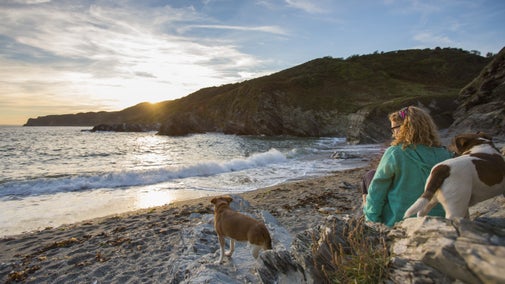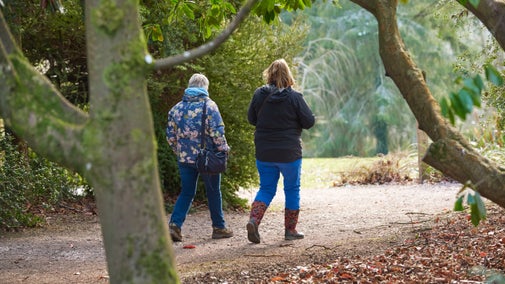Circular walk from Little Dartmouth
Devon
A beautiful four-mile circular coastal walk with some impressive sea and estuary views, following the boats along the coast towards the safe harbour of Dartmouth. Along the way you'll see birds, grasshoppers, crickets and butterflies and, for many the highlight of the walk, the ruins of Gallants Bower, an old Civil War fort with impressive 360-degree views.
Near to
Little DartmouthStart point
Little Dartmouth National Trust car park, Devon TQ6 0JR. Grid ref: SX874491Trail information
Please be aware of livestock
Be aware that you may encounter livestock, which can include sheep and cattle, on this route. Please follow the guidance of onsite signage and take any dog waste away with you.
More near here
Coleton Fishacre circular walk via Coleton Camp
Enjoy views of rugged coastline via viewing points in lush woodland on this walk at Coleton Fishacre in Devon.

Greenway Boathouse walk
Follow this circular walk to find the Boathouse, made famous in Agatha Christie's novel Dead Man's Folly, and explore peaceful woodland paths beside the River Dart.

Prawle Point walk
This walk is full of drama: heart thumping cliff-top climbs, with rocky raised beaches below. Look out for the sunken Demetrios below Signalhouse Point and don't miss the ancient boundary stones that dot the landscape.

Get in touch
Our partners

We’ve partnered with Cotswold Outdoor to help everyone make the most of their time outdoors in the places we care for.
You might also be interested in
Explore Little Dartmouth and Gallants Bower
Discover the ruins of an English Civil War fort at Gallants Bower, Little Dartmouth, or enjoy a gentle walk through Crownley Woods. Enjoy views for miles and historic monuments along the way.

Coleton Fishacre
A 1920s country retreat complete with tropical garden by the sea

Top tips for coastal walks
Get safety tips for walking by the coast, including the essential clothing and equipment to take with you and what to do before you set out.

Coast and beaches
Discover the 890 miles of beautiful coastline in our care. Plan your next coastal adventure, whether you want to explore soft, sandy beaches or rugged, windswept cliffs.

Walking in Devon
From rugged coastline with captivating views to gentle woodland strolls, these are some of the best walks in Devon this winter.

